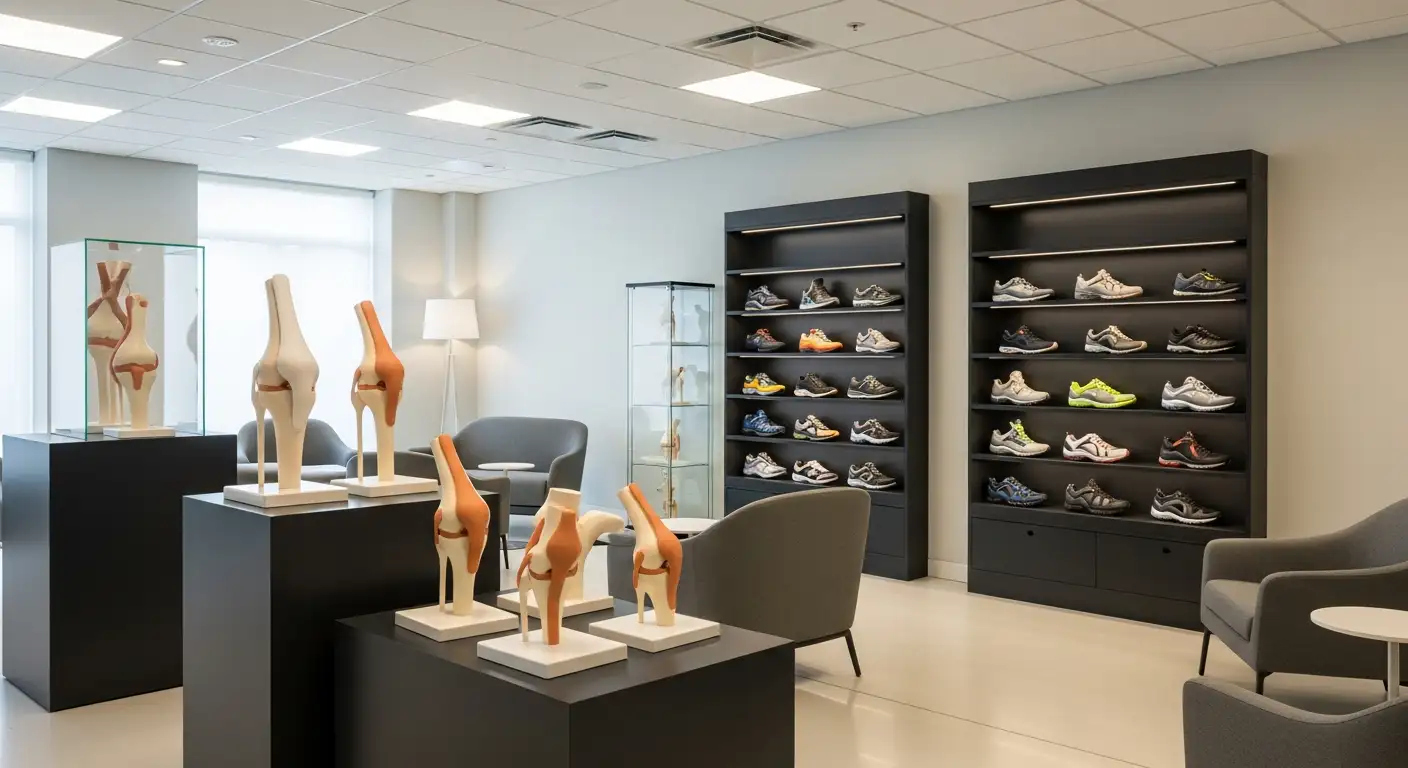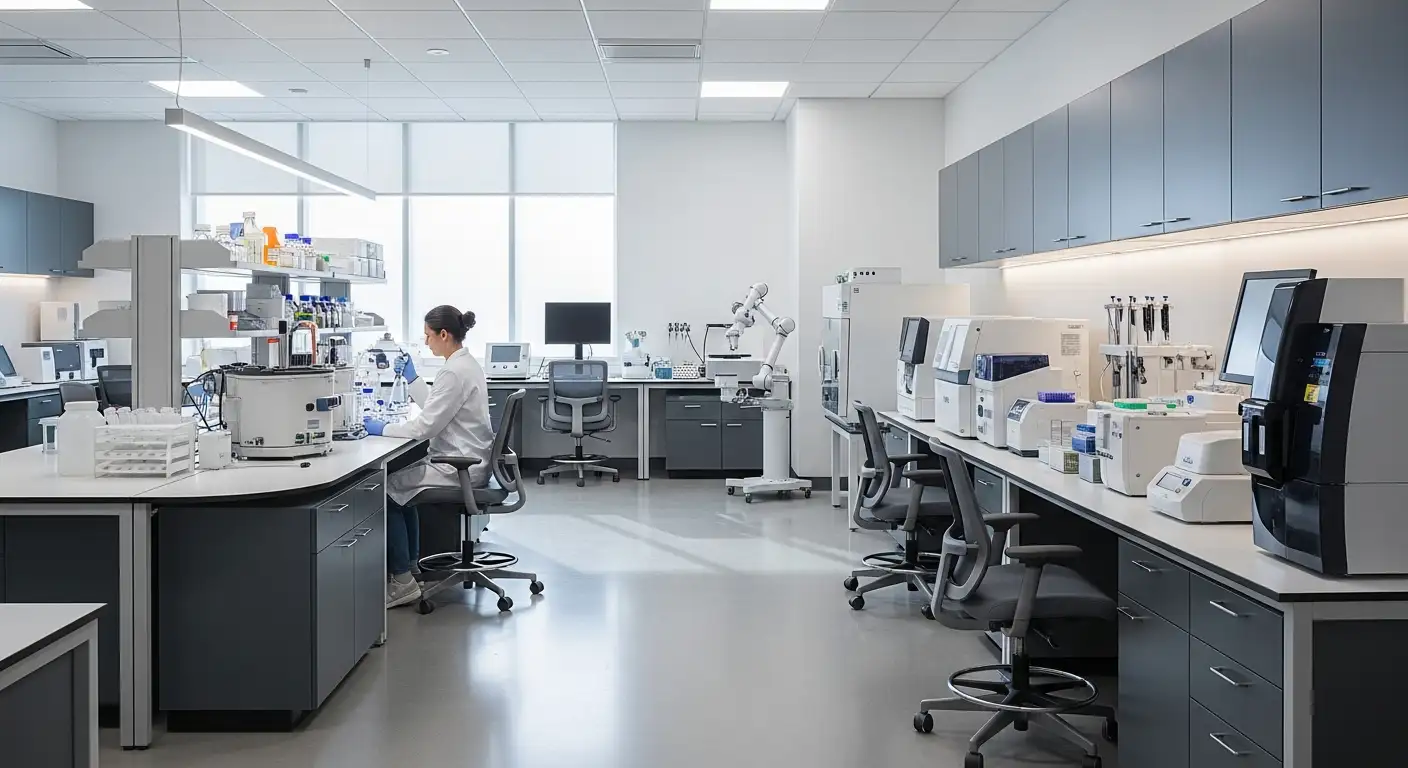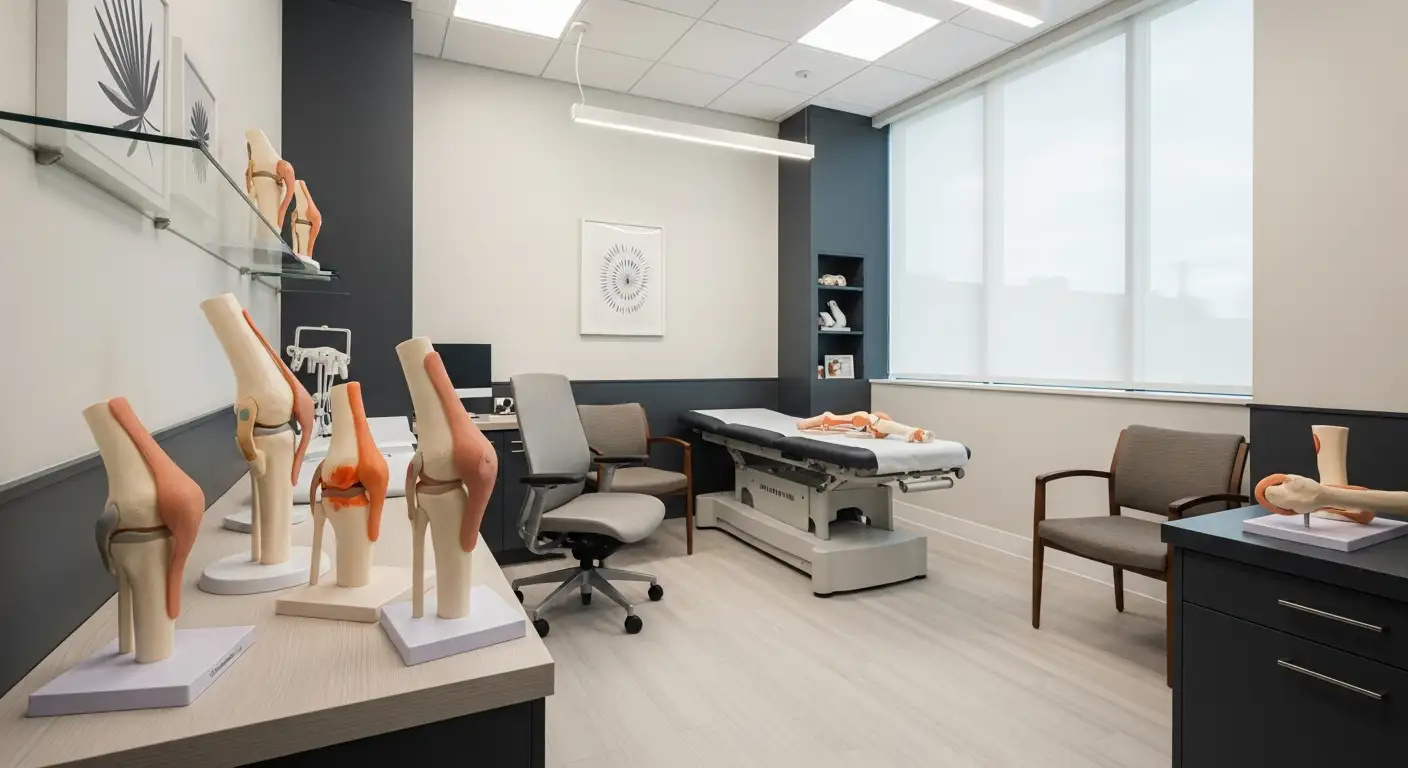Understanding Knee Pain in Running Terrain Changes
Running uphill and downhill places unique stresses on the knee joint, often leading to discomfort or pain, particularly in individuals with underlying conditions such as osteoarthritis or related knee issues. Recognizing the causes of such pain, distinguishing normal soreness from injury, and knowing appropriate management strategies can enable runners to maintain their activity while protecting their knee health. This article explores effective medical treatments, physical therapy approaches, preventive tactics, and emerging therapies to manage and alleviate knee pain from running on uneven inclines.
The Impact of Uphill and Downhill Running on Knee Pain
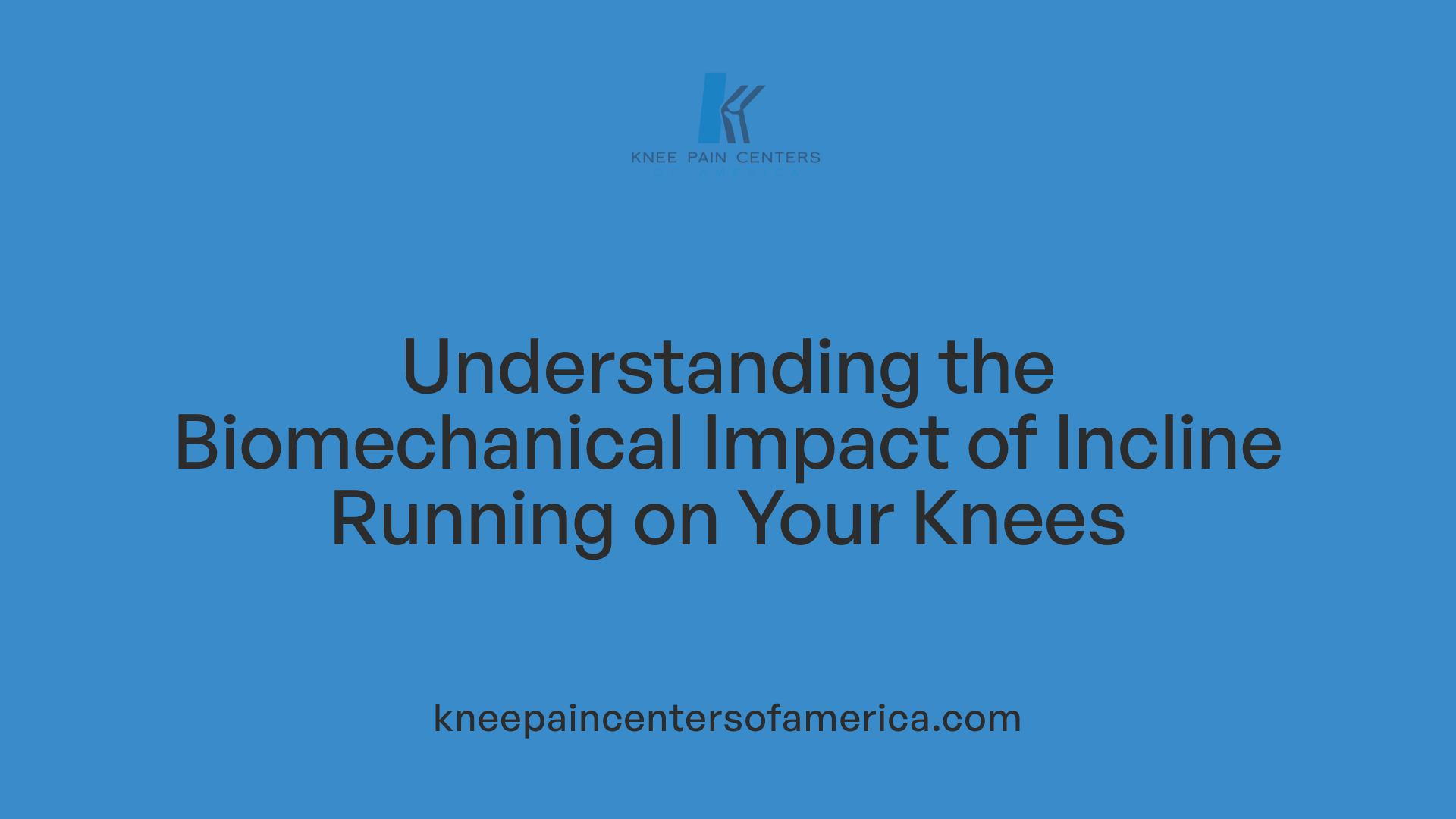
Biomechanical stresses of running uphill vs downhill
Running on inclines significantly increases the mechanical forces acting on the knee joint. Forces can reach 1.5 to 3 times an individual's body weight, especially during uphill or downhill hiking and running. Downhill running tends to be more demanding because it involves eccentric muscle contractions that increase joint impact and load, making the knee more susceptible to stress.
Common knee conditions aggravated by incline running
Several knee conditions are commonly aggravated by running on inclines. Patellofemoral Pain Syndrome (runner’s or hiker’s knee) results from irritation due to repeated bending and straightening of the knee, which leads to the patella rubbing against the femur.
Iliotibial Band Syndrome occurs from friction where the IT band crosses the knee, producing lateral knee pain, swelling, and inflammation especially when the knee repeatedly flexes. Chondromalacia patella, the breakdown of cartilage tissue on the kneecap, causes pain during knee movements like bending or straightening, common during uphill activities.
Differentiating soreness from injury-related pain
It is important to distinguish normal post-exercise muscle soreness from pain caused by injury or worsening knee conditions. Normal soreness typically resolves with rest and does not impair function significantly. Injury-related pain or osteoarthritis flare-ups tend to be sharper, persistent, and increase with activity or weight-bearing.
Monitoring and tracking pain levels helps guide management, signaling when rest or medical evaluation is needed. Proper footwear, surface choice, and strength training can prevent overload and reduce risk of aggravation during incline running.
| Aspect | Uphill Running | Downhill Running | Effect on Knee |
|---|---|---|---|
| Mechanical Load | Increased due to lifting body | Increased eccentric muscle load | Forces 1.5–3x body weight |
| Muscle Activity | Concentric, propulsive effort | Eccentric, braking control | Higher joint impact downhill |
| Common Pain Causes | Patellofemoral pain, tendinitis | Iliotibial band syndrome, chondromalacia | Aggravated by repetitive flexion |
| Pain Characteristics | Gradual onset, worsened by climbing | Sharp, persistent, swelling | Differentiates soreness vs injury |
Recognizing Knee Osteoarthritis and Related Injuries in Runners
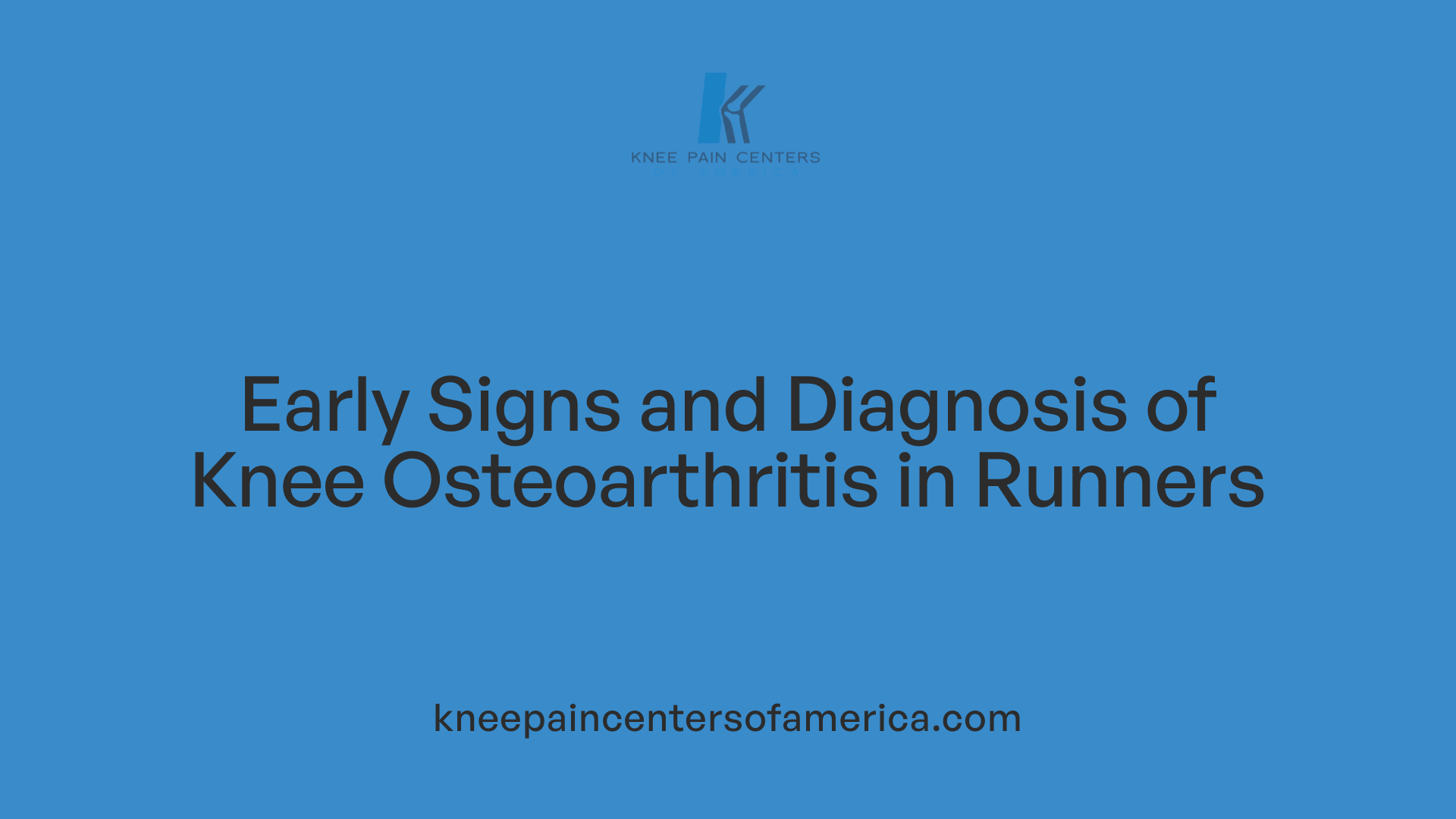
Symptoms and diagnosis of knee osteoarthritis
Knee osteoarthritis (OA) is characterized by symptoms including pain worsened by weight-bearing activities, morning stiffness, crepitus (a crackling or grating sensation), bone tenderness, and a reduced range of motion. In athletes and runners, recognizing these signs early is vital, although diagnosis can be delayed because the pain is often attributed to sports injuries rather than OA.
Overlapping features with runner’s knee and chondromalacia
Conditions such as patellofemoral pain syndrome (runner’s knee) and chondromalacia patella share similar symptoms with knee OA. Runner’s knee causes pain with repeated knee bending, like walking uphill or climbing stairs, due to irritation where the kneecap rubs against the femur. Chondromalacia involves tissue breakdown on the kneecap, producing pain during knee movement. These conditions often require rest, physical therapy, and strengthening exercises similar to those used in managing mild OA.
Importance of medical evaluation
A thorough medical evaluation is crucial to differentiate knee OA from related injuries. Specialists utilize detailed physical examinations that focus on symptom patterns and functional limitations. Listening to the body's pain signals helps tailor treatment, as normal soreness differs from injury or worsening OA pain. Early assessment prevents misdiagnosis and ensures appropriate interventions.
Role of imaging
Imaging techniques, especially plain radiography (X-rays), play a significant role in confirming the presence of osteoarthritis by revealing joint space narrowing and cartilage degradation. While magnetic resonance imaging (MRI) can offer detailed soft tissue assessment, it is less commonly used for initial OA diagnosis. These imaging results, combined with clinical symptoms, guide effective treatment planning for runners.
| Aspect | Details | Clinical Significance |
|---|---|---|
| Symptoms | Pain with weight-bearing, stiffness, crepitus | Suggests joint degeneration |
| Overlapping Conditions | Runner’s knee, chondromalacia | Requires differential diagnosis via exam |
| Physical Examination | Focus on pain triggers, range of motion, swelling | Identifies functional impairments |
| Imaging | X-rays confirm joint space narrowing and cartilage loss | Essential for definitive diagnosis |
Physical Therapy: Cornerstone of Managing Knee Pain from Incline Running
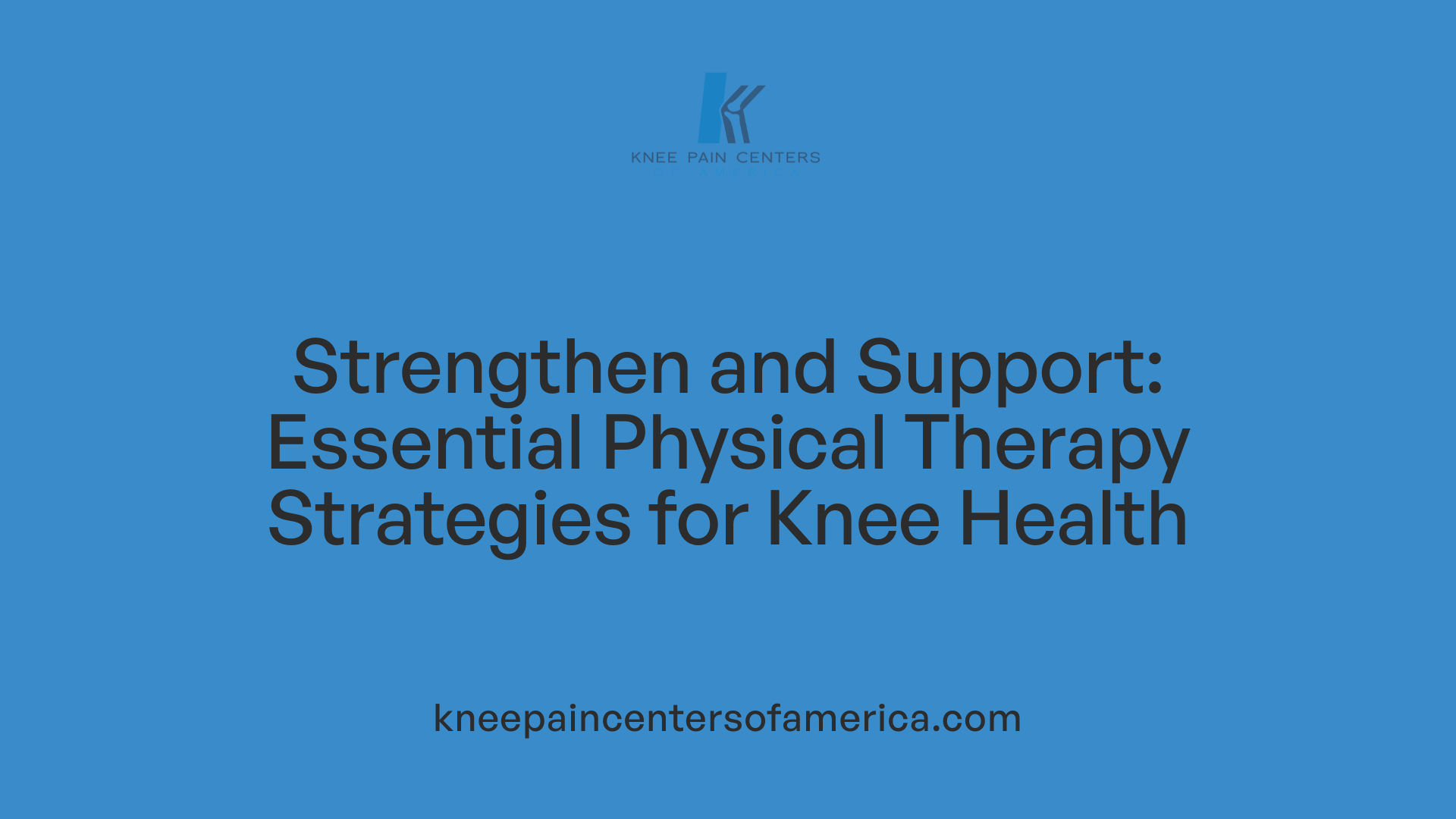
What role does physical therapy play in the management of osteoarthritis-related knee pain?
Physical therapy is essential for managing knee pain due to osteoarthritis and injuries related to running, including activities like incline running. Through tailored exercise programs, it strengthens muscles critical for knee support such as the glutes, quadriceps, hamstrings, and calves. This muscle strengthening helps reduce the force transmitted through the knee joint, easing pain and improving function.
Strength training for glutes, quadriceps, hamstrings, and calves
Targeted strength training focuses on lower-body muscles to stabilize and support the knee during activities. For example, strengthening the quadriceps reduces the load across the knee joint and improves knee alignment. Working on glutes and hamstrings enhances hip stability, which can reduce abnormal stresses on the knee.
Range of motion and flexibility exercises
Incorporating range of motion (ROM) and flexibility exercises helps maintain joint mobility and prevents stiffness common in osteoarthritis. Stretching muscles such as the hamstrings, calves, and iliotibial band can decrease tension around the knee, reducing pain during uphill walking or running.
Manual therapy benefits
Manual interventions, including joint mobilization and soft tissue stretching, complement exercise therapy by enhancing joint flexibility, reducing pain levels, and improving overall function. These techniques help restore normal joint mechanics disrupted by OA or repetitive running stresses.
Activity modification and patient education
Education is integral to physical therapy, guiding individuals to modify their activities to prevent further knee damage. Patients learn to recognize signs of pain versus normal soreness and adjust running volume, intensity, and surfaces accordingly. Advice on footwear selection, using cushioned or motion-control shoes, and cross-training options also supports long-term joint health.
Physical therapy, therefore, acts as a comprehensive approach to manage knee pain associated with incline running and osteoarthritis, emphasizing strength, flexibility, manual care, and informed activity choices to enhance joint longevity and quality of life.
Medical Treatments and Interventions for Knee Pain Relief
What are the most effective medical treatments for managing knee pain caused by osteoarthritis?
Managing knee osteoarthritis effectively involves a combination of non-pharmacologic and pharmacologic approaches.
Weight management plays a vital role by reducing the daily load on knee joints, often complemented by wearing properly fitted and cushioned footwear. Professional footwear analysis helps to minimize knee stress, supporting symptom management during activities like running or walking uphill.
Medications commonly used include acetaminophen and nonsteroidal anti-inflammatory drugs (NSAIDs) to control pain and inflammation. Topical agents and duloxetine may also be prescribed to enhance pain relief. In addition, injectable treatments such as corticosteroid injections can provide temporary but effective reduction of inflammation, easing pain symptoms. Viscosupplements, which are hyaluronic acid injections, improve joint lubrication and may help reduce pain and improve function in osteoarthritis patients.
Physical therapy and strengthening exercises targeting the lower body muscles — including glutes, quadriceps, and hamstrings — support knee stability and help reduce pain by lessening the stress through the joint during movement.
When is knee replacement surgery considered necessary for osteoarthritis patients?
Knee replacement surgery is a treatment option typically reserved for individuals with advanced osteoarthritis who suffer from persistent, severe knee pain and notable loss of function.
When conservative measures such as medication, physical therapy, injections, and lifestyle modifications fail to provide adequate relief, surgery is considered. Diagnosis usually involves imaging like X-rays that show significant joint space narrowing, cartilage loss, or bone misalignment.
The aim of surgery, which may include partial or total knee replacement, is to reduce pain and improve mobility, thereby enhancing quality of life for affected patients.
| Treatment Type | Description | Purpose/Benefit |
|---|---|---|
| Weight Management | Reducing body weight and daily joint load | Decreases mechanical stress on knee joints |
| Supportive Footwear | Professionally fitted, cushioned, or motion-control shoes | Minimizes knee load and improves symptom control |
| Medications | Acetaminophen, NSAIDs, topical agents, duloxetine | Controls pain and inflammation |
| Injections | Corticosteroids, viscosupplements (hyaluronic acid) | Reduces inflammation temporarily, improves joint lubrication |
| Physical Therapy/Exercise | Strength training and flexibility exercises focusing on lower body | Enhances joint support, reduces pain |
| Surgery | Partial or total knee replacement | Relieves severe pain and restores function |
Emerging and Minimally Invasive Therapies for Knee Osteoarthritis
Are there any emerging treatments for osteoarthritis-related knee pain that show promise?
Recent advances in knee osteoarthritis management include innovative and minimally invasive therapies that aim to reduce pain and improve joint function.
One such treatment is Genicular Artery Embolization (GAE), a procedure that targets abnormal blood vessels around the knee joint to decrease inflammation. This technique has demonstrated significant pain relief lasting over a year in many patients, offering an alternative to traditional pain management approaches.
Regenerative therapies like Platelet-Rich Plasma (PRP) injections and stem cell treatments are also gaining attention. PRP involves using a concentration of a patient's own platelets to stimulate healing and reduce inflammation in the knee. Stem cell therapy aims to promote cartilage repair and regeneration, potentially addressing the underlying causes of osteoarthritis. Although these treatments show promise and have reported benefits in symptom relief, ongoing research is required to confirm their long-term effectiveness and to standardize their use in clinical practice.
These emerging therapies represent hopeful frontiers in osteoarthritis care, complementing established treatments such as physical therapy, weight management, and proper footwear. As scientific studies continue to evolve, patients and clinicians can look forward to more personalized and effective management strategies for knee osteoarthritis.
Prevention and Self-Management for Runners Facing Knee Pain
Monitoring pain signals and adapting activity
Listening to your body's pain signals is crucial when running, especially if you have or are at risk for knee osteoarthritis (OA). Normal muscle soreness differs from pain caused by injury or advancing OA. Tracking pain levels can help you adapt your running routine, such as taking rest days or decreasing intensity to avoid worsening symptoms. Gradual increases in running volume allow joints to adapt safely.
Footwear evaluation and surface selection
Proper footwear is vital in reducing knee load and managing discomfort. Professionals can help analyze your gait and recommend cushioned or motion-control shoes tailored to your needs. Experimenting with different surfaces is also beneficial. Running on flat or soft terrains like trails and treadmills often reduces knee strain compared to hard or uneven ground. Avoiding downhill running can lower stress on the knees.
Weight management and load reduction
Maintaining a healthy weight reduces the mechanical load on your knees, which is crucial for managing OA risk and symptoms. Beyond footwear, wearing supportive shoes during daily activities can further decrease joint stress. Incorporating weight control strategies along with adequate leg muscle strengthening enhances knee protection during running.
Cross-training and recovery importance
Including low-impact activities such as swimming and cycling in your fitness routine aids joint recovery and improves overall knee health. Recovery days are essential to allow joint repair and prevent overuse injuries, especially as you age. Strengthening exercises targeting the glutes, quadriceps, hamstrings, and calves help stabilize the knee and distribute forces more evenly during running and uphill hiking.
Specific Strategies to Address Incline Running-Induced Knee Conditions
Treatment of Patellofemoral Pain Syndrome and Iliotibial Band Syndrome
Patellofemoral pain syndrome (runner's knee) causes pain on climbing stairs or walking uphill due to irritation where the patella rubs against the femur. Similarly, iliotibial band (IT band) syndrome results in lateral knee pain particularly with repeated knee flexion during uphill walking caused by friction where the IT band crosses the knee. Both conditions benefit from rest and activity modification to reduce knee stress.
Use of Braces and Icing
Bracing can help support the knee, stabilize alignment, and reduce pain especially in patellofemoral pain syndrome. Applying ice after activity helps decrease inflammation and relieves discomfort associated with both syndromes. Icing combined with rest remains a primary home management technique for flare-ups.
Strengthening and Stretching Exercises Targeting Hip, Thigh, and Lower Leg Muscles
Exercises such as glute bridges, wall sits, and leg extensions build strength in the glutes, quadriceps, and hips which support knee stability. Stretching the hamstrings, calves, and IT band maintains flexibility and minimizes tension that can aggravate these conditions. Regular performance of these exercises can reduce symptoms and improve function during incline running or hiking.
Table: Overview of Strategies for Incline Running-Related Knee Conditions
| Condition | Primary Treatments | Recommended Exercises |
|---|---|---|
| Patellofemoral Pain Syndrome | Rest, bracing, icing, physical therapy | Glute bridges, leg extensions, hamstring stretches |
| Iliotibial Band Syndrome | Activity modification, icing, steroid injections if needed | IT band stretches, hip strengthening, calf stretches |
Optimizing Running Practices to Protect Knee Health
Proper running form and cadence
Maintaining good running form is crucial for protecting your knees. Poor form can increase joint stress and lead to conditions like patellofemoral pain syndrome. Focusing on a balanced stride, keeping your knees aligned, and avoiding overstriding helps distribute forces more evenly. Additionally, a cadence of around 170 to 180 steps per minute is often recommended to reduce impact forces on the knees.
Selecting terrain and impact surfaces
Choosing the right terrain can make a significant difference in knee comfort. Softer, even surfaces such as grass, trails, or treadmills reduce the impact compared to hard surfaces like concrete or uneven paths. Uphill running generally places less strain on the knees than downhill due to reduced braking forces. Varying your running surfaces can help minimize repetitive stress and protect joint health.
Gradual increase of running intensity and volume
Progressing slowly with your running routine allows your knees to adapt safely. Gradual increases in running volume and intensity help avoid overloading the joints and reduce the risk of aggravating osteoarthritis or other knee pain conditions. Starting with low-dose running and incrementally adding mileage or speed is an effective strategy to build tolerance and promote cartilage health.
Importance of rest and listening to body signals
Paying close attention to your body is essential when managing knee health. Normal muscle soreness is different from pain signaling injury or joint inflammation. Resting when experiencing significant knee pain helps prevent further damage. Incorporating recovery days into your training schedule supports joint repair and sustains long-term running capability. Cross-training activities can also support recovery while maintaining fitness.
Maintaining Knee Health for Uphill and Downhill Runners
Managing knee pain from running uphill or downhill requires a comprehensive approach combining medical treatments, physical therapy, preventive measures, and lifestyle adaptations. Understanding the unique stresses incline running places on the knee helps in identifying pain causes and appropriate interventions. Strengthening exercises, proper footwear, activity modifications, and effective medical options including injections and emerging therapies can significantly alleviate symptoms. Importantly, listening to your body, pacing your running volume, and using cross-training techniques support joint health and running longevity. With tailored management, runners can continue enjoying their activity while minimizing the risk of knee pain and osteoarthritis progression.
References
- Running Safely With Knee Osteoarthritis
- The common causes of knee pain after running and how to ...
- Knee Problems When Walking Uphill
- Rehabilitation Strategies for the Athletic Individual with ...
- Runners and Knee Osteoarthritis
- Eight tips for running with arthritis in your knees
- Knee Pain From Hiking: The Best Prevention and ...
- New Treatment for Osteoarthritis of the Knee
